Discovering Rome: chiese
- soniamelodias

- Mar 27, 2019
- 7 min read
Updated: Apr 9, 2019
When you visit Rome you have to bare in mind that you are visiting the place where one of the most important religions was created. Rome was the birth place of Christianity so it is no wonder that the city is filled with the symbols of this particular religion: churches.
Yes, there are really a lot of churches in Rome that you must visit. It´s not about being religious. I, for example, am an atheist. The point is that most churches have authentic cultural and artistic treasures inside them and the best thing about them is that admission is free, unlike museums where admission costs a small fortune.
So, if you visit Rome, do try to enter the largest number of churches you can in order to appreciate the art they contain in their interior.
Chiesa di Sant'Agnese in Agone
This church is situated in front of Piazza Navona, one of the main urban spaces of the historical center of the city of Rome and it is the place where Santa Inês, to whom it is dedicated, was martyred, the old Domitian's Stadium, whose trace is still perceived in the format of the Piazza.
Sant'Agnese in Agone is a baroque church of the seventeenth century which constitutes a magnificent work of architecture and you should definitely visit its interior.
The reconstruction of this church began in 1652 under orders of Pope Innocent X, whose palace, Palazzo Pamphili, also faced the piazza and was next to the site of the new church, which would become for all intents and purposes a family chapel attached to the residence.
Chiesa di Gesù e Maria
This is a baroque church located in Via del Corso, in the rim Campo Marzio. It is situated right in front of another baroque church, San Giacomo in Augusta.
The vault and the main altarpiece, a "Coronation of the Virgin" , are works by Giacinto Brandi. The entrance of the church to the sacristy is decorated by frescoes by Giovanni Lanfranco.
Chiesa di S Maria Maggiore
This magnificent Basilica was very close to our hotel and it is an excellent example of why it is worth visiting these places and appreciate it´s amazing architecture and the art they contain.
The Basilica of Santa Maria Maggiore was built on a pagan temple dedicated to the goddess Cybele, in the mid-fourth century under the orders of Pope Liberius. According to legend, the Virgin appeared before the Pope with the instructions for building the church, and the shape of the floor was designed based on a miraculous snowfall.
Over the years, the basilica has had many different names, such as Saint Mary of the Snow (due to snow that led to the church’s shape), Santa Maria Liberiana (for Pope Liberius), St. Mary of the Nativity (because it received a relic of the Holy Nativity), and it was finally called Santa Maria Maggiore, as it is the largest of the 26 churches in Rome dedicated to the Virgin Mary.
The basilica displays varied architectural styles, from early Christian to Baroque. The entire building was restored and renovated during the eighteenth century, so the facade and much of the interior dates from that period. Despite this, the church retains the bell tower, some mosaics and marble floors from the medieval period and some Ionic columns from other ancient Roman buildings, as well as splendid fifth-century mosaics. The ceiling decoration has been preserved from the Renaissance period, while the domes and chapels belong to the Baroque era.
Probably the most striking aspect of this Basilica is the different parts belonging to such varied periods of history. As if it were made up of remnants, the church summarizes the most important stages of Christian art in Rome.
Chiesa di San Giacomo in Augusta
San Giacomo in Augusta is a parish, titular and former hospital church built at the dawn of the 17th century, at Via del Corso 499, near Piazza del Popolo, in the rione Camp Marzio.
The dedication is to St James the Great, and Augusta refers to the proximity of the Mausoleum of Augustus.
The remote ancestor of the church also had this name. When the present church was built, it took the name of San Giacomo degli Incurabili and this is how it is still often referred to in modern publications.
Chiesa di Sant' Ignazio di Loyola
This church is dedicated to Saint Ignatius of Loyola, the founder of the Company of Jesus. It was built in Baroque style between 1626 and 1650 and, initially, it functioned as a chapel annexed to the nearby Roman University.
It is visited every day by pilgrims and tourists from around the world:
for baroque artistic works;
for cultural events;
for the proposed spiritual meetings;
for the Jesuit saints buried here: Luigi Gonzaga, Roberto Bellarmino, Giovanni Berchmans.
Chiesa di Santa Maria in Aquiro
Santa Maria in Aquiro is a late 16th century parish and titular church of ancient foundation in the rim Colonna, just north-east of the Pantheon. Its current appearance was largely preserved in the late sixteenth century, the interior was designed manly in the 19th century in neo-Baroque style.
Chiesa Santa Maria degli Angeli e dei Martiri
Santa Maria degli Angeli e dei Martiri is located very near Piazza della Repubblica. This is a most surprising and unique temple in the city of Rome thanks to its ruined facade that contrasts with its vast and sensational interior.
The site where Santa Maria degli Angeli e dei Martiri was erected was where the Baths of Diocletian had been founded, an impressive demonstration of the glory of the Roman Empire until, in an intent to conquer Rome, the Goths cut the water supply of all the aqueducts of the city, and the baths had to be abandoned. When neglected, the baths were taken over by bandits and courtesans until the Renaissance, when the grounds were bought by the French cardinal Jean du Bellay, who commissioned the construction of a beautiful villa and its gardens. A Sicilian priest suggested building a church on the site of the Baths of Diocletian, in honor of all the Christian slaves who died while building the baths. Several decades later, in 1560, the priest’s efforts were rewarded by Pope Pius IV who commissioned Michelangelo to transform the baths into a church.
The interior of the church is remarkable and completely unpredictable from looking at its bare facade for it has an impressive dimension and is beautifully decorated with vast frescoes on its walls and enormous several colored marble columns.
Inside the temple you are also able to enjoy:
the meridian solar line built by the astronomer and philosopher Francesco Bianchini in 1703 (this line would tell when noon was throughout the year, the arrival of the solstices and equinox, as well as a calendar);
an impressive organ, recently bought, with 5,400 tubes (this instrument is capable of leaving the church’s visitors who are lucky enough to hear it spellbound).
As I mentioned before, there are countless churches of all sizes and from different periods in Rome, but, without a doubt, this one is one of the most remarkable and impressive churches in the city.
Chiesa Sant'Ivo alla Sapienza
The church of Sant´Ivo alla Sapienza is located inside the courtyard of Palazzo della Sapienza, home of the ancient University of Rome, originally established by Pope Leo X, as a university chapel dedicated to Irineone. It was built between 1642 and 1660 by the architect Francesco Borromini and it is considered one of the masterpieces of the Roman baroque.

Chiesa Santa Maria in Aracoeli
Right next to Piazza del Campidoglio is the Church of Santa Maria in Aracoeli, which you can also visit.
This is one of the most cherished churches by Rome’s inhabitants. The temple is also renowned because it houses the Santo Bambino of Aracoeli, a wooden figure of the Child Jesus, which is said to be miraculous. Unfortunately, it was closed when we went to Campidoglio.
Located south of the Capitoline Hill, Santa Maria in Aracoeli was built during the sixth century on the site of an ancient Byzantine abbey. During the ninth century the church was given to the Benedictines, and a few centuries later, was given to the Franciscans. These restored the church giving it a more Gothic aspect. In 1797, during the Republic, the church was deconsecrated and transformed into a stable.
Nowadays, the basilica has been fully reconstructed and is one of the most visited in Rome.Millions of tourists and locals visit the church to see the Santo Bambino of Aracoeli, a wooden image of the Christ Child, who is believed to resurrect the dead. The statue, made out of olive wood during the fifteenth century, was stolen in 1994 and was never recovered. A replica was made to substitute it.
The temple has 22 columns, none exactly alike, which were taken from Roman ruins. It is also worth seeing various burials and frescoes from the fifteenth century.The wooden ceiling is decorated with paintings representing the Battle of Lepanto, where the Holy League defeated the fleet of the Ottoman Empire. The Aracoeli staircase was completed in 1348 to celebrate the end of the Black Death in Rome. It is a marble staircase made up of 124 steep steps that finish at the entrance of Santa Maria in Aracoeli. It is believed that all those who climb the stairs on their knees will win the lottery.
The Basilica of Santa Maria in Aracoeli is extremely well located, in the heart of the city, near the Altare della Patria. Therefore, stopping for a quick visit is very popular among visitors.

Chiesa di Santa Maria del Popolo
Standing on the Piazza del Popolo, near the northern gate of the Aurelian Wall, the Basilica of Santa Maria del Popolo is a small temple with a splendid Renaissance decoration in its interior.
The origins of the basilica are very unusual. A legend has it that the site where the church was eventually erected was haunted by the ghost of Nero, the Roman Emperor that reigned from 54 to 68 AD. On his burial ground had grown a bewitched walnut tree full of crows. To put an end to this myth, Pope Paschal II in 1099 ordered the tree to be cut down and commissioned a Romanesque chapel to be built instead. The chapel was enlarged in 1227 and later reconstructed between 1472 and 1477. In 1513, various of the most influential artists of the period, like Pinturicchio, Raphael, Caravaggio and Bernini were requested to decorate the walls and ceilings of the temple.
Santa Maria del Popolo’s decoration is unlike any other church in Rome. The ceiling, less high than most built during the same period, is practically bare, while the decoration of each of the small chapels is especially remarkable. Among the beautiful art work found in the church, it is worth highlighting the Chapel Cerasi, which houses two canvases by Caravaggio from 1600, and the Chapel Chigi, built and decorated by Raphael. If you look closely at the wooden benches, you’ll be able to see inscriptions with the names of the people the benches are dedicated to. This custom is also found in a lot of English speaking countries like Scotland or Edinburgh, where the families of the person deceased buy urban furniture in their honor.
In Rome, as I´ve mentioned, you can visit an infinite number of churches, therefore I thought it was important to show you the most significant ones and this is definitely one worth visiting, not because of its structure or its facade, but because of its impressively decorated chapels. We were unfortunate because the church was closed when we visited Piazza del Popolo.
#SantAgneseinAgone #GesùeMaria #SMariaMaggiore #SanGiacomoinAugusta #SantIgnaziodiLoyola #SantaMariainAquiro #SantaMariadegliAngeliedeiMartiri #SantIvoallaSapienza #SantaMariainAracoeli #SantaMariadelPopolo




























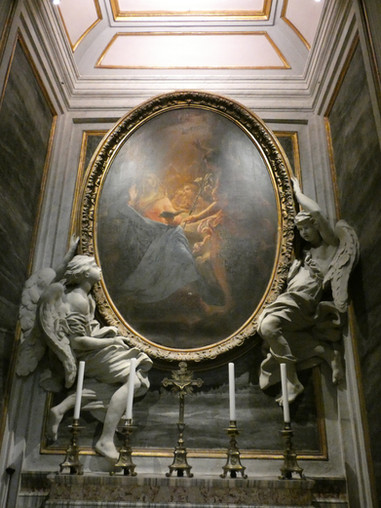









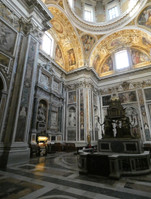




























































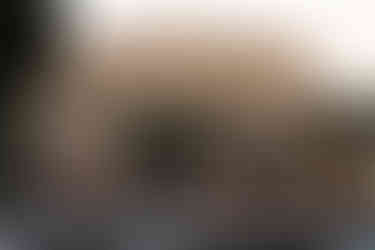
























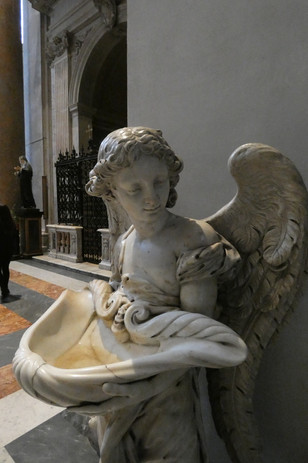



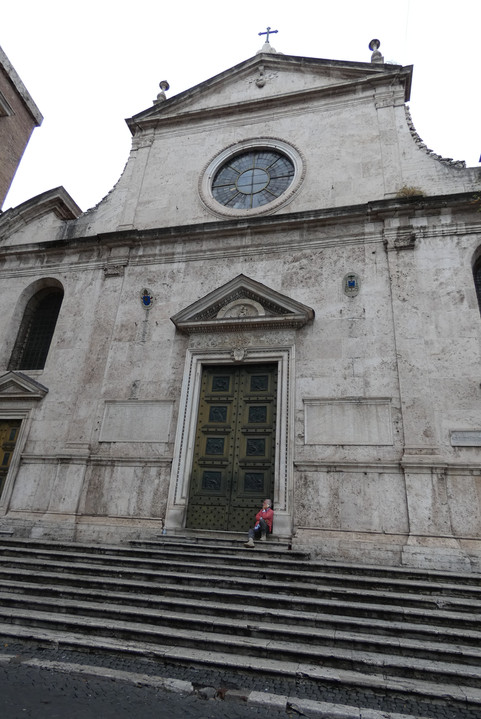

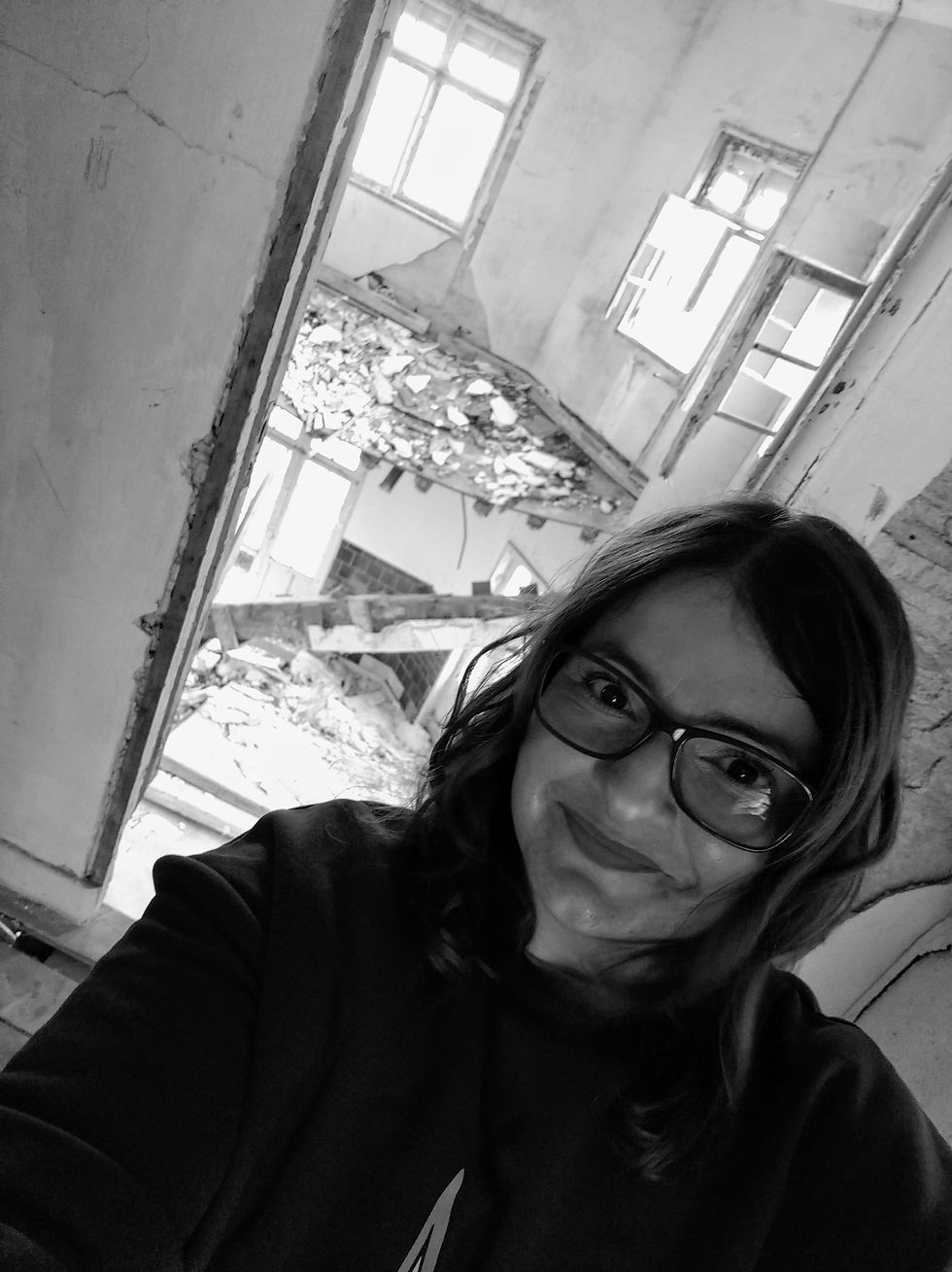

Comments